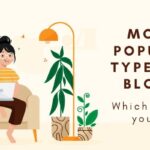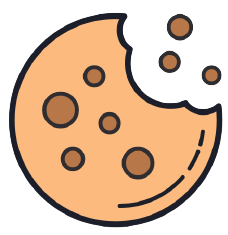I stood on the pavement and the world swam in front of me. Everyone seemed to be walking faster, speaking quicker, buildings looked huge and intimidating and I was certain that I was about to collapse, I grabbed the wall for support and my breath came out in short rasping bursts. My heart was hammering so loudly I could feel it in my throat. I wanted to cry, scream, and run all at the same time and yet I was rooted to the spot.
Bewildered at such terrifying sensations, I scrambled around in my bag for my mobile to call for help but was then gripped by another sensation. Everything suddenly looked even stranger than it had before and the world took on an out-of-focus, unreal appearance as if I wasn’t even in my own body. Was I going mad? What was wrong with me?
There was no one to hold my hand or guide me home. I was alone, in a city I hardly knew and I felt like I was dying. Sobbing, I slumped to the ground, aware of people walking around me as I curled up in a ball, petrified by the haunting world I had somehow become a part of and longing for an end to my intense and seemingly unprovoked suffering.
Agoraphobia had gripped me after enduring immense anxiety for many years. It used to be that when I experienced a panic attack I would race outside for air, for distraction from my thoughts and feelings and to escape the almost claustrophobic sensations I suffered. However, one day I felt unwell and faint when outside and this triggered a new disease that I never thought I would ever have to confront — agoraphobia. For me, this was devastating. I spent so much of my time outside. I always had, since being a child, and the desolation I felt at facing a future indoors overwhelmed me.
My daughter was very young at the time when agoraphobia first struck and it wasn’t long before our lives became severely restricted by the disorder. Just posting a letter became a huge ordeal even though the letterbox wasn’t far from our house. Grabbing her tiny hand, we raced there and back in only a few minutes and then it would take all afternoon for me to overcome the panic. Supermarkets rapidly became a no-go zone. I tried but found the size of the shop daunting and I would abandon my half-filled trolley. I needed a safe place to escape to, which could either be my car or my home. Frequently, I would drive home in a state of heightened anxiety, always careful but worried the sensations of immense unreality would entirely engulf me and take me to another world.
My biggest fear was that I would collapse in the street, alone, and that I wouldn’t be able to get to safety. I didn’t take too much research to realize that I was not alone with such thoughts. I learned about agoraphobia and became acquainted with all the listed symptoms and the most common treatments. However, I was extremely isolated, and though knowledgeable, I didn’t know how to reach out for help, or who I could turn to.
The few people I did speak to made me feel even lonelier, as they preferred to think I was simply afraid of large, open spaces, but it was so much more than that. It felt to me as if my whole world was falling apart.
Someone very kindly took my hand the day I was discovered curled up on the pavement and saved me from myself. He taught me all about cognitive behavior therapy over a coffee in a cafe that I nursed with trembling fingers. He helped me analyze the way I was thinking and when I considered my anxious symptoms. I could see how my irritational thoughts had created them. Yet I still felt powerless to alter the way my mind worked. However, determination fueled my spirit, I wanted a normal life again and I was going to find a way to get it back.
The basis of cognitive behavior therapy is to recognize that despite all the amazingly terrifying sensations you experience during a panic attack, nothing dramatically awful actually happens to you. I appreciated the rationale but doubts still remained. I reckoned that one day something terrible would actually happen to me; I would vomit in the street or collapse against a shop window or, God forbid, race down the road screaming at the top of my lungs and ripping off my clothes.
I had to stop fearing fear and I needed to recognize that panic really couldn’t do me any harm. It felt impossible to me. I woke up with anxiety and went to sleep with it; it exhausted me. I needed a break and only I could give myself one. I knew that to face my fear was going to take more courage than I had ever mustered before.
At first it was difficult immersing myself in my thoughts, I forced myself to really think and capture the irrational and fearful thoughts just as they entered my head. A degree in law enabled me to think in a legally analytical way and I put my often extremely destructive thoughts on trial in court. I accepted that the sensations I was experiencing were simply the result of the innate fight or flight response built into all of us; acceptance really was the key. I became an observer of myself, let go of the past and my symptoms, and suddenly discovered my mind free again to explore life!
Suddenly I began to accumulate positive memories and these started to replace the negative ones in my mind. I ventured farther from home, alone, and didn’t feel as anxious as I had. I caught each irrational and worrying thoughts as it arrived and challenged it straight away. Then I continued with my day, accepting that sometimes I would walk in hand with anxiety.
Today I live a life almost free of worrying thoughts, anxiety, and agoraphobia. I have fun times with my outgoing son. I enjoy voluntary work, writing, and teaching. I count my blessings every day for the stranger who took my hand, for cognitive behavior therapy and for the joy of living; I love each and every day.





